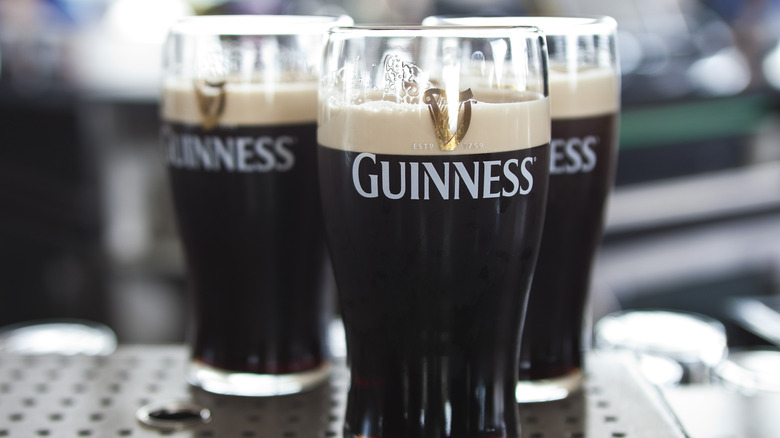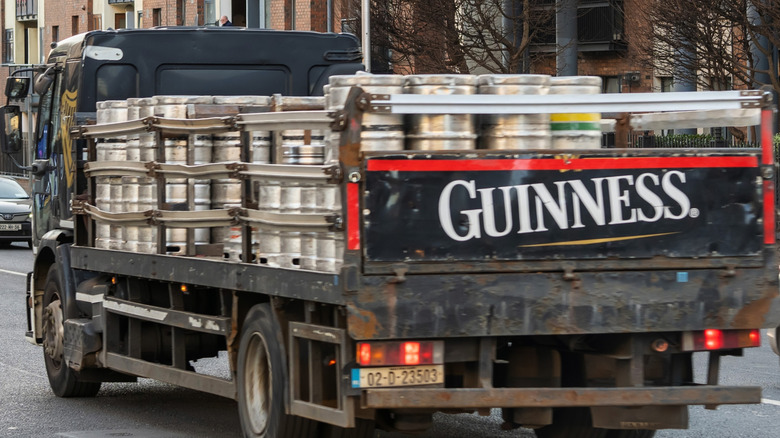The Ideal Temperature To Drink Guinness At (And Why It Takes 24 Hours)
One of Ireland's most beloved exports, Guinness is a dark, creamy stout beer with an intense flavor that may surprise first-time drinkers — or turn them into fans for life. With its deep brown appearance and roasted, almost chocolaty taste, Guinness can be intimidating to drinkers more familiar with light beers, but if poured correctly, it can be an immensely satisfying change. That said, there are a few informal rules to follow to get the most out of your pint, including serving it at the optimal temperature. To get the scoop on what that temperature is and why, we spoke with Guinness Brand Ambassador Zack Berger.
Berger emphasizes that ultimately, the choice is up to the drinker. "Anyone should be able to responsibly enjoy their beverage to their own specifications," he says. His official recommendation, however, is to serve Guinness Draught Stout chilled anywhere between 38 and 42 degrees Fahrenheit. "This allows for balance between the bitter head and the creamy body, allowing for a fulfilling experience," Berger says.
While some beer drinkers may prefer their pints on the chilly side, Berger personally prefers a pour on the higher end of his spectrum, having found that "the most epic and delicious pints of Guinness Draught are just at 42.5 degrees." For context, that's still far below room temperature, which is generally considered to be between 68 to 77 degrees Fahrenheit, though lighter mainstream beers are often served a bit colder, in the 33- to 40-degree range.
Chill overnight to maximize the stout experience
To achieve optimal Guinness Draught (that's draft to Americans) temperature, Berger recommends chilling the keg overnight. Not only does this ensure the beer gets properly chilled, it also "allows for any agitation or shaking to resolve and return to solution," says Berger, adding that "no one wants a shaken-up pint."
All draft beers are served chilled, though the ideal temperature can differ based on the type of beer. That's because colder temperatures tend to mask some flavors, while according to Berger, warmer ones "will expose what could be considered 'off flavors.'" For example, Berger says lager-style beers, which "tend to be crisp and milder," drink better when served colder, which "celebrates more of the mouthfeel and effervescence of the pint." In contrast, he says, ales and stouts like Guinness, with "richer and deeper profiles, can be served at higher temperatures to dive into the complex flavors and aromas."
To further ensure your Guinness experience is as epic as possible, make sure to use the correct type of beer glass and pour slowly, allowing time for the beer to settle before topping it off. If you're feeling fancy and extra British, you can also try pouring a black and tan beer using Guinness and Bass Pale Ale.

